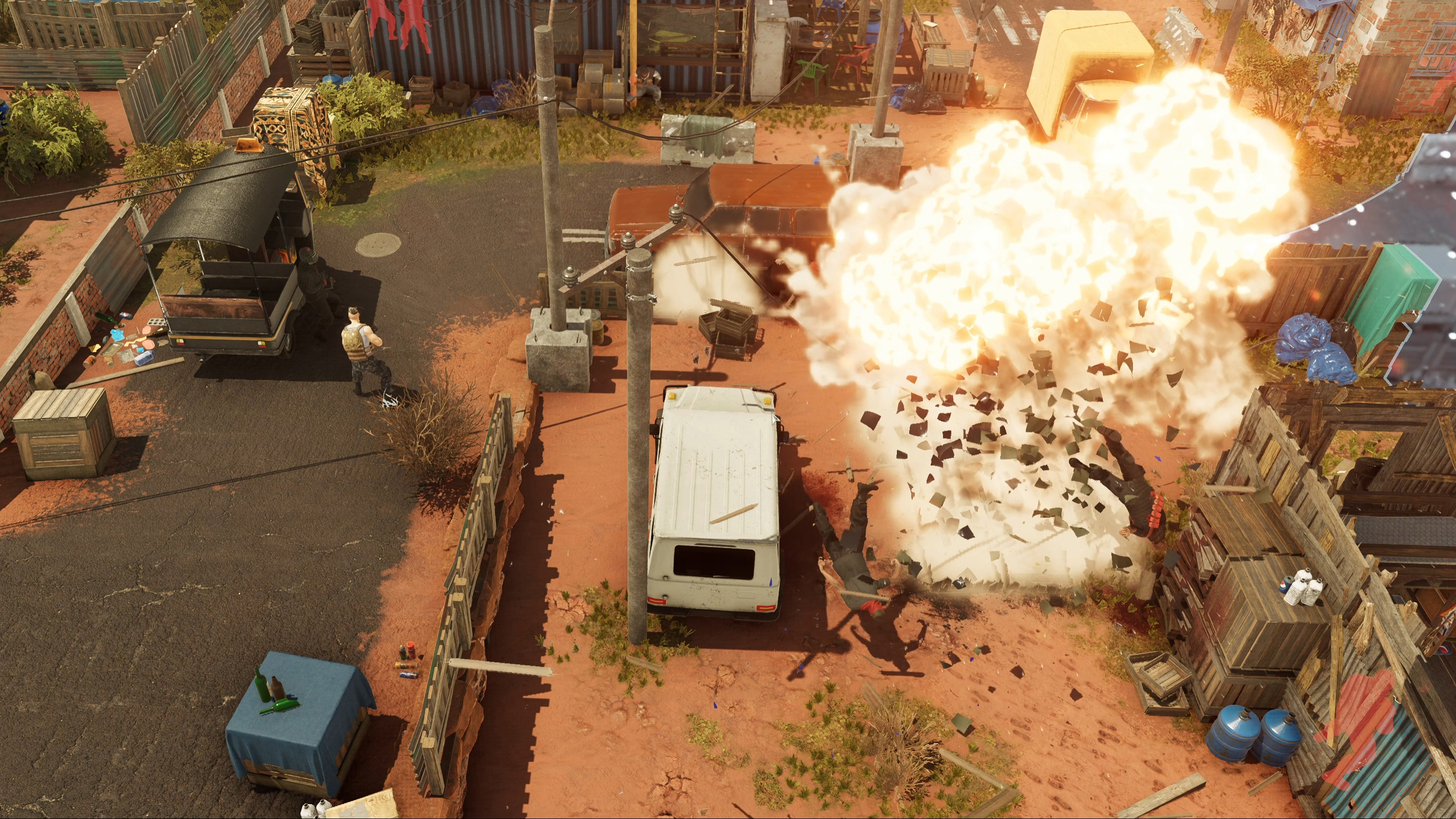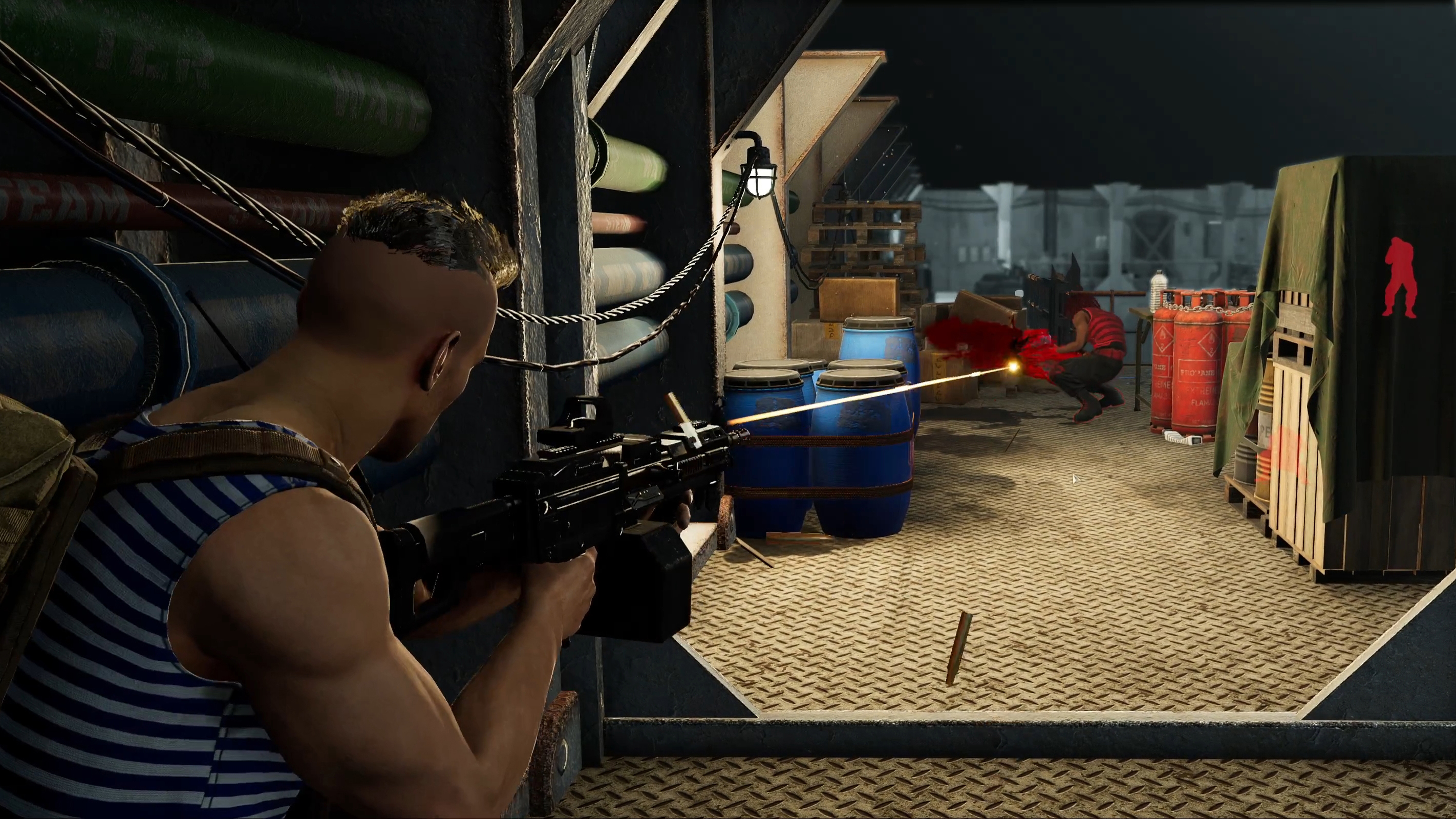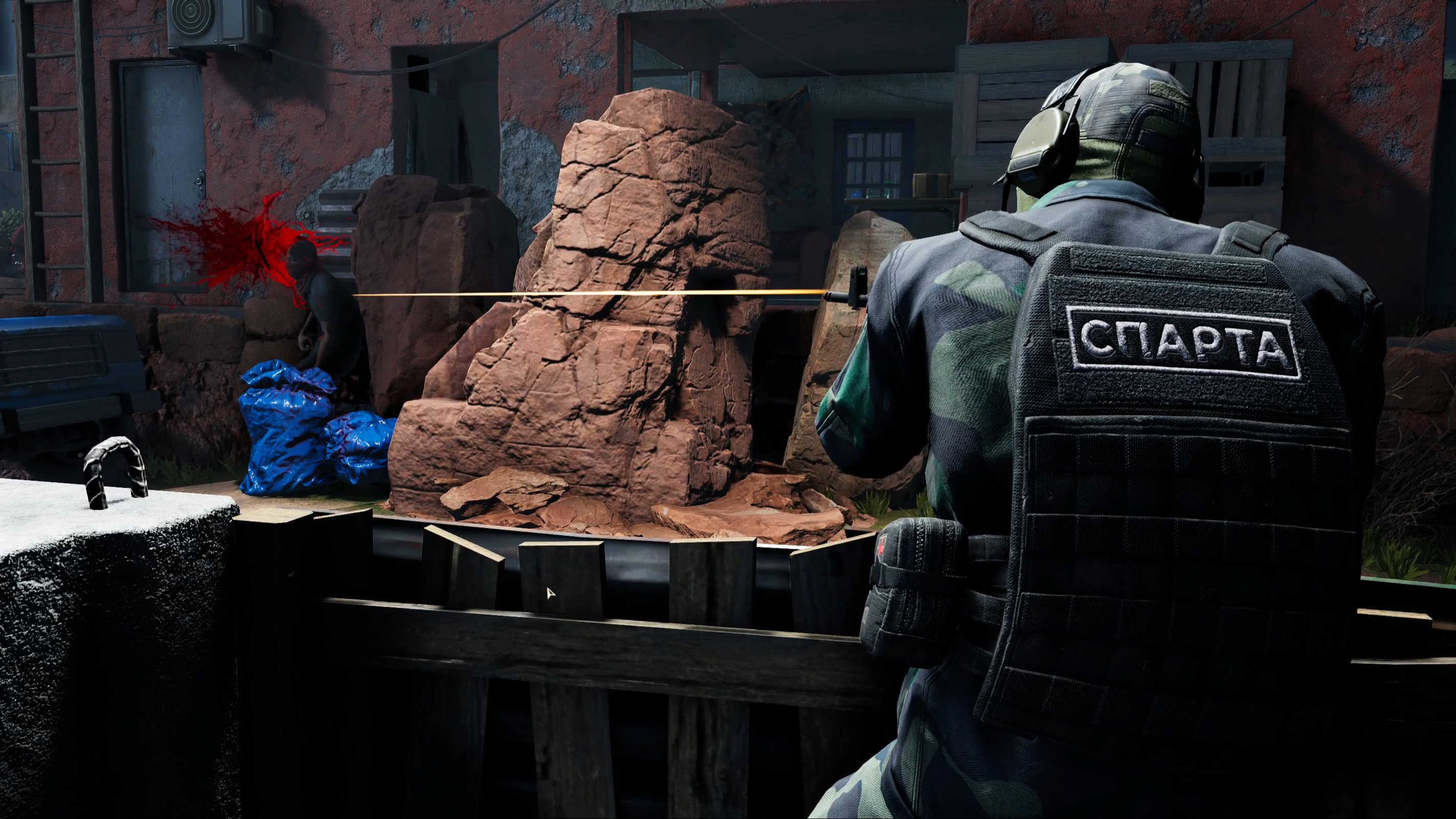About how the team, previously engaged in hyper-casual games, took on the development of "Sparta 2035", a turn-based tactical game in the style of XCOM for PC — the editorial board of App2Top spoke with Gleb Durnovo, one of the founders of the Lipsar studio.
Alexander Semenov, App2Top: Hi! Tell us about the studio's history. Who are you, where do you come from, what did you do before, and how many of you are in the team?
Gleb Durnovo
Gleb Durnovo, Lipsar: Hi! Our studio has been around for five years. Its core team consists of people with an average of more than 10 years in the game dev industry. Currently, the project team includes 30 people: programmers, 2D and 3D artists, game and level artists, animators, and testers.
I did a little research on your history and was surprised to find out that you came into PC gaming from hyper-casual. How did that happen?
Gleb: In fact, if we look at our team's experience, we initially moved into hyper-casual from developing large PC projects and hardcore mobile games. Now we have returned to our roots.
Why did we go into hyper-casuals back then? The reason is simple — in 2019, there was a very low entry threshold. You could easily start developing without any prior investment, using your own funds. For a studio composed of seasoned professionals, it's much easier to build a portfolio with at least some hyper-casual projects and then seek investment than to try and secure funding without any portfolio at all.
Now that you've returned to the PC market, don't you feel the risks here are higher than in mobile?
Gleb: Let's put it this way — risks on PC are just different. On mobile, it's ruled by traffic royalty, and if you strike hard, a successful free-to-play mobile game isn't about the gameplay but LTV -> CPI (Lifetime Value -> Cost Per Install). A game with great gameplay can easily fail if it can't generate cheap installs and/or if the average player doesn't leave a significant amount of money in it. Essentially, the mobile segment is currently dominated by genres where the key is aggressively monetizing users, with gameplay often being secondary.
In the PC premium segment, it's a different model. Traffic purchase-centric approaches don't work here. On the contrary, marketing here should focus on audience engagement, feedback. The game's significance, gameplay, concept, and idea relative to marketing on the PC market is much higher compared to mobile. A good game, with thoughtful efforts to promote it, will find its audience and make some money. The main thing is to follow the simple market rules — understand how much you can earn in a genre, who you'll be competing with, and accordingly, what budgets/time your team can dedicate to the game.
PC free-to-play is another story. Here, the competition between game services is fierce, and the budget for creating (and especially marketing) a new product is astronomical. Plus, there are huge risks associated with the difficulty of a new product enticing players away from veteran projects.
Okay, we've delved deeply into this. Let's return to you. Why start with a tactics game?
Gleb: As a team, we know and understand this genre well. The tactical genre is fascinating. Many think making a turn-based tactical game is simple. In reality — making just a turn-based tactical game is easy, but making a GOOD one is an enormous and very challenging task. It requires a lot of experience with genre hits, understanding how to build engaging gameplay, and how not to break it.
For me, turn-based games are a favorite genre. I've played them since I was a teenager. I started with XCOM: UFO Defense (bought it on five floppy disks!) and Terror from the Deep, as well as Heroes 2. Since then, I've played almost everything released in this genre.
How do you assess the current market situation for turn-based tactics?
Gleb: We regard it as quite favorable for us. The last major hit in this genre came out in 2017 (XCOM 2 and its expansion War of the Chosen). Since then, nothing on a similar scale or level has emerged. XCOM 3 won't be coming out in the next few years, as Firaxis is focusing on Civilization.
What about Jagged Alliance 3?
Gleb: From our perspective, JA3 was quite a mediocre game — with a dull and overloaded combat system with old-school mechanics, as well as generally poor balance.
Of note: there was the decent but quite unremarkable Warhammer 40000: Chaos Gate — Daemonhunters, and the close-combat-focused King Arthur. All other projects from recent years were several tiers below.
So now is a good moment to enter the genre with a project that (we're realists) if not taking XCOM's place, at least appearing quality, competitive, and interesting. There is an audience for the genre; there are few new, interesting projects. Studios capable of making such projects are even fewer.
Let's move on to discussing the project. How long has "Sparta" been in development?
Gleb: The project has been in development since early 2023. The first few months were spent on pre-production, followed by active development. So as of October 2024, the project has been actively in development for just under two years.
How different, in your opinion, is the development pipeline for a PC project compared to hyper-casual? Can you tell us what you had to relearn and what mobile experience actually helped?
Gleb: It fundamentally differs. Classical hyper-casual is about "having an idea, quickly prototyping it, and testing. If it works, we'll do it properly; if not, discard it." With a big PC project, "quickly prototyping" takes up to six months of development. Accordingly, the key focus should be on pre-production itself. In other words, before you start building anything, you must meticulously plan every aspect of the future game, as there won't be the time or budget for on-the-fly revisions. The game in its fullest glory should already exist in the documents and the minds of game designers before the first line of code is written.
By the way, what proved to be the hardest part of creating the game? Where, let's say, were most of the slip-ups?
Gleb: A turn-based tactics game involves a vast amount of logic. Essentially, the entire game revolves around the grid of the playfield — logic for cell transitions (horizontal and vertical connections, where one can go from a cell, where one cannot), cover perception logic (the grid must understand what constitutes full cover, half cover, and where there is none, updating information if a cover gets destroyed), visibility calculations for enemies from the current position... and much more.
In the very first playable version (in the alpha build from September 2023), our grid poorly handled the automatic "processing" of manually placed objects, which led to a tremendous amount of manual labor. Right after the alpha, a simple technical question arose — either we enhance the grid, or we continue manually handling objects (almost assuredly failing to create the required number of game locations). Enhancing the grid took time and drained us, but the result still delights us to this day.
You developed mobile games on Unity. What is "Sparta" being created on?
Gleb: Also on Unity — we as a team have gathered significant experience working with this engine. Switching to a fundamentally new engine would have significantly delayed the development timeline and increased project risks from "making new mistakes." Unity isn't a flawless tool; our programmers and technical artists could write an entire book on the topic. But at least here, we know what to expect and understand how to tackle various issues.
In general, speaking as a whole, I feel that ready-made development tools, be it Unity or UE, create more problems for developers each year than they solve. One of the main illusions of beginner developers is thinking, "I'll take the engine, and everything will work as it should out of the box." Nothing fundamentally works out of the box with Unity or UE — every aspect has to be "improved with a file."
Which projects did you target when developing your game?
Gleb: Our main references were XCOM2 and Gears Tactics. From the first, we took the two-action point system, vertical gameplay (the ability to climb buildings and jump from them), and the full and half-cover system. From the second, we adapted the cone (directional) overwatch mode, and the overall principle of "rewarding players for tactically correct actions," which practically means: no point-blank misses, no taking significant damage while in cover.
We also added a lot from our side: honest ballistics (every bullet is calculated separately and can, on a miss, hit anything — another enemy or ally, break cover, or destroy some decorative elements), high combat lethality (both enemies and the player's fighters can fall from a single well-aimed burst fired from the flank), and actively destructible environments (there are many objects on locations that can break when a character runs past or when they're shot).
Am I right in understanding that mainly there will be battles featuring dynamic combat at medium range? So, there won’t be such situations as in JA2 where sometimes firefights happen across half the map?
Gleb: Overall, that's correct, although snipers — both enemy and yours — can fire from long distances using "line of sight" (a sniper just needs allies to see the target to fire at it). There's a class called "assault," equipped with a shotgun, designed for close-range combats, preferring quick maneuvers to the flank and rear. The remaining classes are focused on mid-range combat.
Speaking in terms of numbers, you announced 20 missions and 10 mercenaries. It's hard to gauge if that's a lot or a little without details. How long is the game projected to take?
Gleb: Concerning 20 missions, we meant that in the final version of the game, releasing in 2025 on Steam, there will be at least 20 story missions. These missions are hand-crafted, designed, and visually unique. Completing each story mission takes between 40 to 60 minutes.
But in the game, aside from story missions, there are also global map modes, squad management, equipment purchases, base construction, along with a substantial number of generic missions generated on the map. Completing each such mission takes about 30 minutes. There are at least 4-5 such tasks a month, and the total campaign completion time (without rushing) will take approximately a year of in-game time.
Hence, the total completion time (story campaign + side missions) will be at least 30-40 hours.
How large are the maps going to be? Will there be multiple ways to complete them, or will they be more like puzzles?
Gleb: We aimed for smaller maps (so their completion wouldn't exceed 30 minutes), as players start to tire from enormous locations and hordes of enemies. The game should have a good rhythm and pace changes — from missions to the global map and management, from management to combat mission.
The maps are not preset puzzles with only one way of completing each battle. Thanks to the AI and a significant number of behavior patterns, abilities, and randomness — the variety of situations within even the same assignment is almost infinite. Just like in the best of the genre.
In the released trailer, use of neural networks for working on character portraits stands out. How extensively are you using generative networks in the game's development?
Gleb: Yes, we are using neural networks. But this is mainly a necessity. In our game, there are over 20 story characters, and portraits are also needed for unnamed spartans, whose number is potentially unlimited. Having all of these drawn by real artists' hands is, unfortunately, out of scope for our timelines and budgets. Nevertheless, we understand all the apparent drawbacks of neural art — both the moral and visual side of the issue. Therefore, we've decided to create portraits, at least for all the key characters in the game, drawn by artists, and even launched a contest to find talented artists willing to help us for a stipend (finding suitable hands capable of portrait realism turned out to be incredibly challenging!). Taking this opportunity — I invite portrait artists skilled in realism to join our friendly team!
In spring, you promised a demo. I might have missed it. While preparing for the interview, I couldn’t find it. Was there a demo, and if so, what feedback did you gather?
Gleb: For a number of reasons, we had to move the demo from spring to fall. We're actually glad about this decision, as the demo version coming out in October will be much better than the one planned for April.
Also in spring, you stated that the game's development could take 200 million rubles. Could you tell more about the project's burn rate?
Gleb: A game in our genre, comparable in complexity and scale to "Sparta 2035," costs about $3 million to develop and takes about three years. We made our game in under two years for a fraction of that amount. This was largely achieved through passion and the desire to elevate the project to the highest possible level within our modest budget. We are hoping that on its release in Russia, our game will receive a warm reception and that revenue from sales will cover all the planned improvements and content updates, and ideally, allow us to work on subsequent projects in the genre.
Considering development is happening in Russia, do you personally feel this budget is a lot or a little? Were you ready for such budgets after hyper-casual, where projects, excluding marketing, are much cheaper?
Gleb: I believe that developing games should be in line with the market and earning potential. Creating a project that costs $3 million for less than a million dollars is bold and very stressful, but allocating $30 million for the development of a turn-based tactical game (as happened with Lamplighters League, for instance) is madness. Such investments are challenging to recoup in our genre; one can't build a strategy seriously on the idea of reaching the success level of XCOM 2. Dreaming is okay, but building a strategy based on it isn't.
As for the budgets, as mentioned earlier, the team had worked on big projects in the past, I've personally worked on large-scale projects with serious budgets. So, working on "Sparta" wasn't something entirely new, where one might "lose their grip on reality."
You stated that 90 million was allocated by the IRI. Can you disclose who provided the remaining funds? I ask this so those following in your footsteps might have an idea of how it's done.
Gleb: Currently, apart from IRI, no one else financially supports the project. "Sparta," which was conceptualized in late 2021, received its budget in the new reality of 2022. As such, there were few foreign investors willing to invest in the project. Domestic investors who understand that good games are a good investment seem not to exist yet (or are still evaluating the niche).
By the way, if you're an investor reading these lines, we're always ready to discuss our plans and the possibility of partnership. Thankfully, we've reached a stage where many risks associated with the team and the project are behind us.
On what terms did you agree with the IRI? Can you share what audience they expect from you?
Gleb: Unfortunately, I can't disclose exact figures. But I can say that every install of the free version of "Sparta" will be very important to us. We ask the Russian gaming community to support us if not financially (although that, too, if possible!), at least by downloading the free version of "Sparta 2035" when it's available and playing it. If they wish, they can share their opinion on our social networks — we are always open to feedback.
Unlike "Trouble", your game isn't a historical project, arguably promoting one of the Russian cultures. On the contrary, the game is about the future, and even about Africa. How challenging was it to convince IRI that the project was worth investing in?
Gleb: Our narrative is relatively straightforward. "Sparta 2035" touches on one of the eternal themes — the theme of war. A distant, incomprehensible, alien war where people suffer as well.
The characters in our game, the fighters of "Sparta", go to East Africa to help those in need and unable to defend themselves: the local resistance, desperately fighting against the far-right extremist group "Damat," and civilians caught in the crossfire of a brutal war. In facing Damat, the Spartans stand against lawlessness and chaos, against the right of the strong to oppress and annihilate the weak for their whims, regardless of the "ideas" these whims might cloak themselves in.
It's important that the Spartans are not poster heroes, not ready-made models for bronze statues, but ordinary people — flawed, with their own weaknesses, past mistakes, and dreams for the future. You might easily recognize a neighbor or a fellow traveler in one of these Spartans. Yet, we aim to show how such an ordinary person, at the right time and place, isn't afraid to take responsibility, standing up to protect the weak when everyone else is hesitating or seeking personal gain. Stepping into the shoes of such a person or at least contemplating that such heroes might walk among us unnoticed is our message.
How do you plan to release the game? Will it be early access first, or do you aim for a full release immediately?
Gleb: The Russian release will happen no later than February 2025, and the international release will likely follow in 2025 as well.
Overall, what are your expectations for the project?
Gleb: There is a widespread prejudice against the Russian gaming industry similar to the one against Russian cinema: "our people can't do anything right, and whatever they do is a copy of foreign projects." Of course, in both cases, this is not true, but overcoming such a perception trend can only occur through the regular emergence of worthy and original projects.
We see "Sparta" as just such a project: having absorbed the best solutions from foreign games of the same genre, yet offering players an original concept, mechanics, and story. We are confident that with adequate resources, "Sparta" will become a notable phenomenon in the domestic gaming industry.
We also hope that "Sparta 2035" will secure its place among worthy, engaging turn-based tactics games and will appeal to both lovers of the genre and a wider audience of players. This, for us, is the main criterion for success.
And the last question: Are you ready to recommend other developers, previously engaged in hyper-casual, to venture into PC gaming?
Gleb: It depends on the background of the developers. In our case, moving into PC development was a "return to roots," we knew where we were going and why. But I sincerely believe that even teams with far less experience can successfully enter the PC market. The main thing is to choose the genre and mechanics based on the following principles:
- The team is well-versed in this genre, has experience, understanding of where the fun is, and how to make a good game.
- The project can realistically be completed relatively quickly and without a large budget, focusing primarily on gameplay.
That means, when leaving hyper-casual, don't jump into making an online shooter or a 3D third-person action game. But creating a small yet quality game, like Into the Breach, Loop Hero, or Quazimorph, is something every passionate, professional team can do. It just takes careful planning, thorough pre-production, and (the hard part) — long-term dedication, steering the project through all challenges to its release. Best of luck to everyone!
Thank you for an excellent interview!






